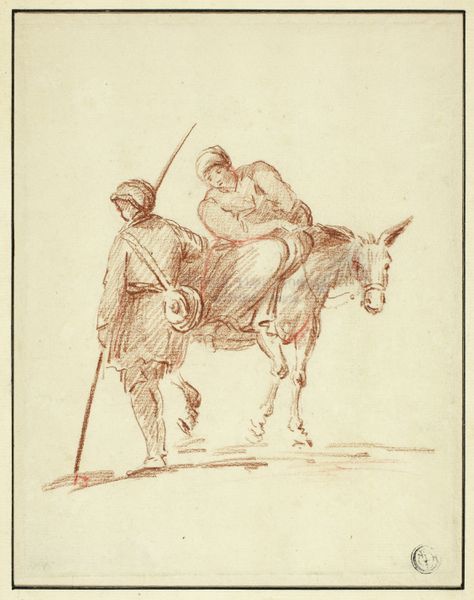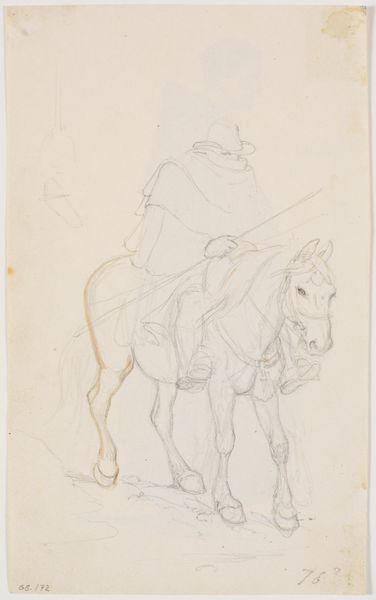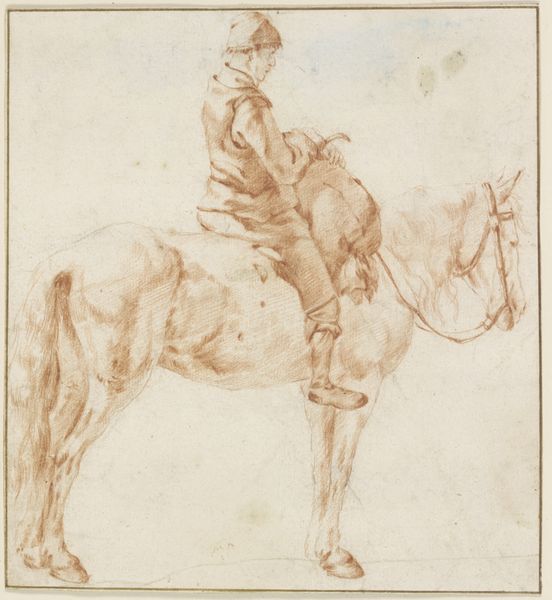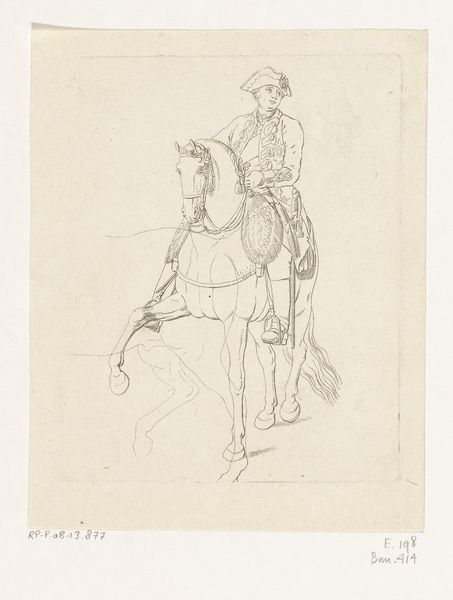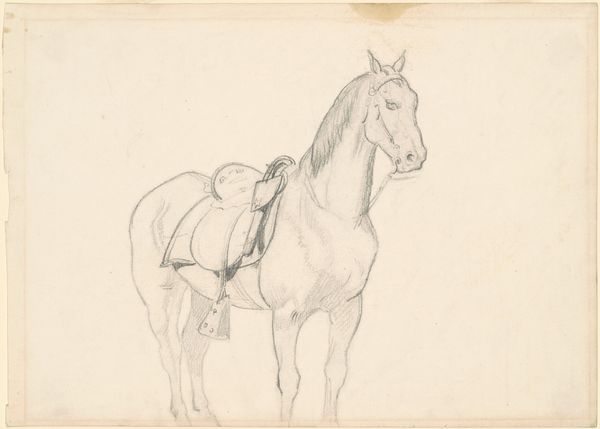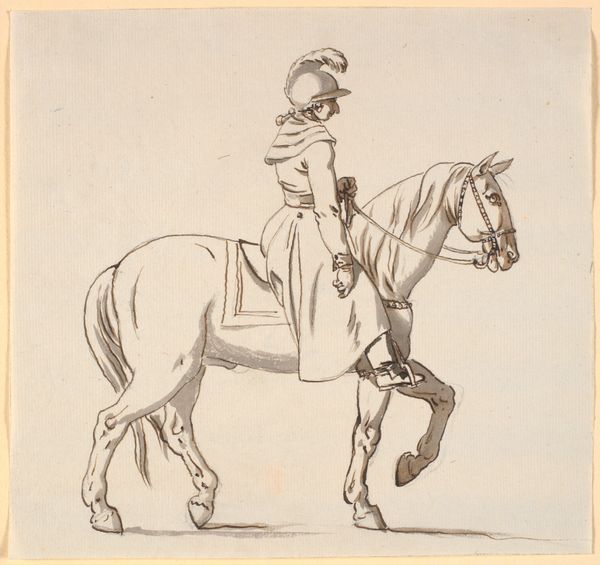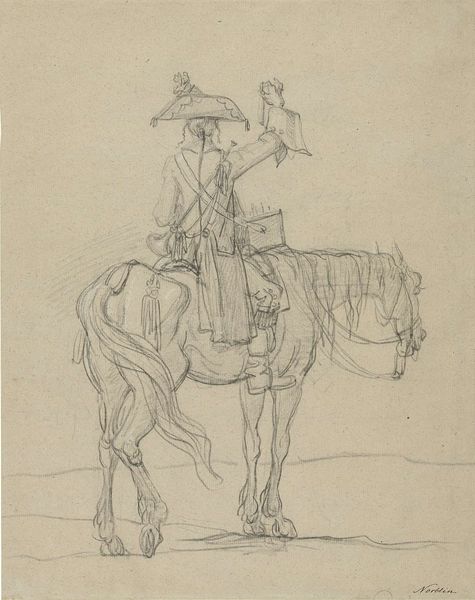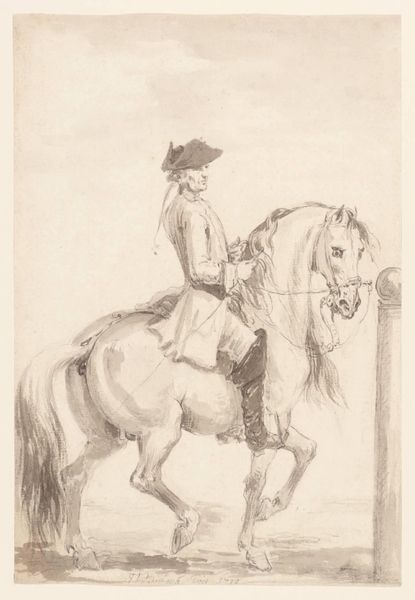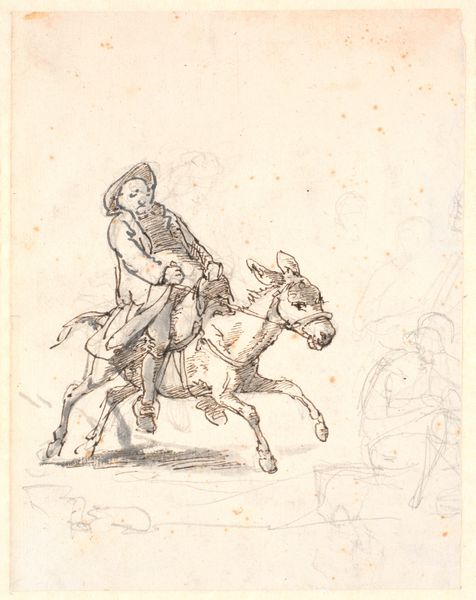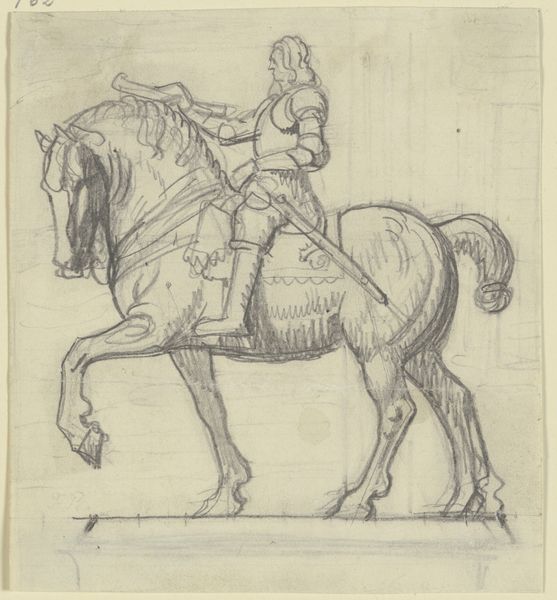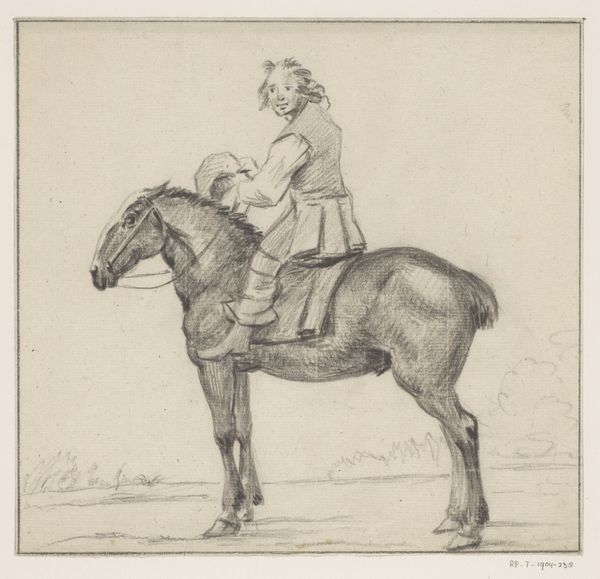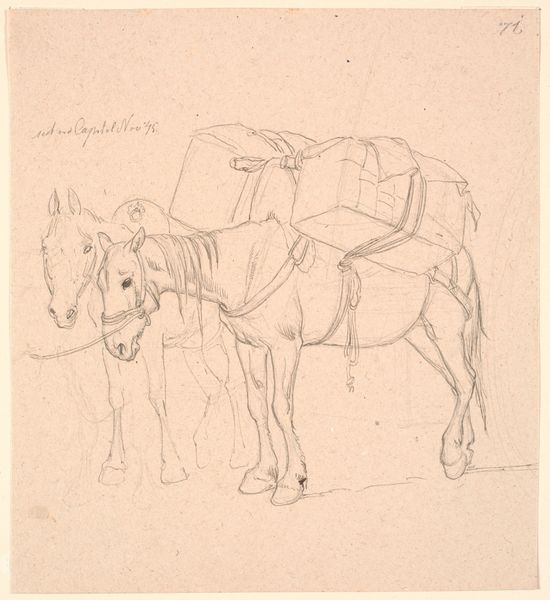
drawing, pencil
#
drawing
#
baroque
#
landscape
#
figuration
#
pencil drawing
#
pencil
Copyright: Public Domain
Curator: We are looking at "A Cavalier Mounting a Horse" by Philips Wouwerman, held at the Städel Museum. Editor: It feels very preliminary. The swiftness of the marks, the overall softness; it captures a fleeting moment, almost like a ghost. Curator: Wouwerman was a Dutch Golden Age painter, renowned for his landscapes and battle scenes, often featuring horses. This drawing provides a glimpse into the artistry of the 17th century, reflecting the social values placed on the gentry, military power and animal ownership. We see a gentleman of the upper class in his fashionable dress, and are asked to examine the complex ways power, class and social role are intertwined. Editor: Structurally, there is a lovely balance, isn't there? The diagonal line from the horse's front hooves to the rider's hat, intersected by the vertical of the whip, creates a subtle tension that energizes the whole piece. Wouwerman's mark-making communicates both the power of the horse and the lightness of the rider being mounted. Curator: Considering Wouwerman’s place within the Golden Age, we need to consider the historical factors involved. Dutch paintings weren’t made in a bubble and we must analyze social values during the rise of capitalism and colonialism that could enable such images to be made, including issues such as class, colonialism, and racial power structures. Editor: But let's also admire how little he tells us. Note the elegance of the horse’s flowing mane compared to the rider's back. Everything is reduced to the most essential lines. We intuit so much with so little information and feel how the rider uses a whip to prepare the horse to obey his will. Curator: The subject here also contributes to understanding gender dynamics from the 17th century. As art history evolves and takes more diverse points of view, understanding how these historical figures took their roles becomes an important subject to study through the drawings of that period. Editor: Absolutely, these observations certainly add layers of interpretation. The artist provides us with an important glimpse of his society. Curator: Seeing the artistic interpretation along with cultural insights into such dynamics gives us an idea of how Dutch paintings acted as reflections, both beautiful and perhaps deceptive, of their period. Editor: Precisely. It's in these contrasts that the work reveals its depth.
Comments
No comments
Be the first to comment and join the conversation on the ultimate creative platform.
